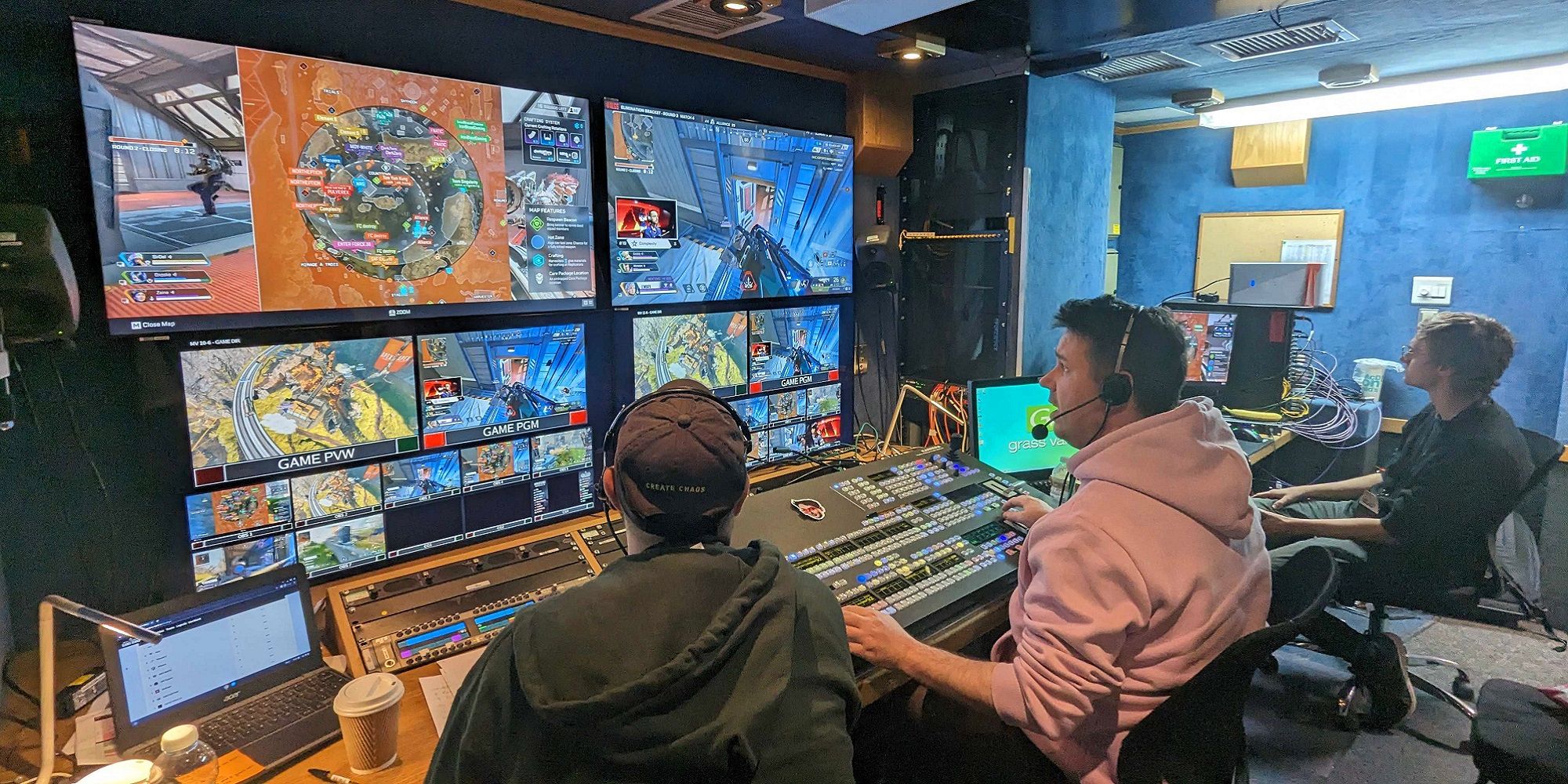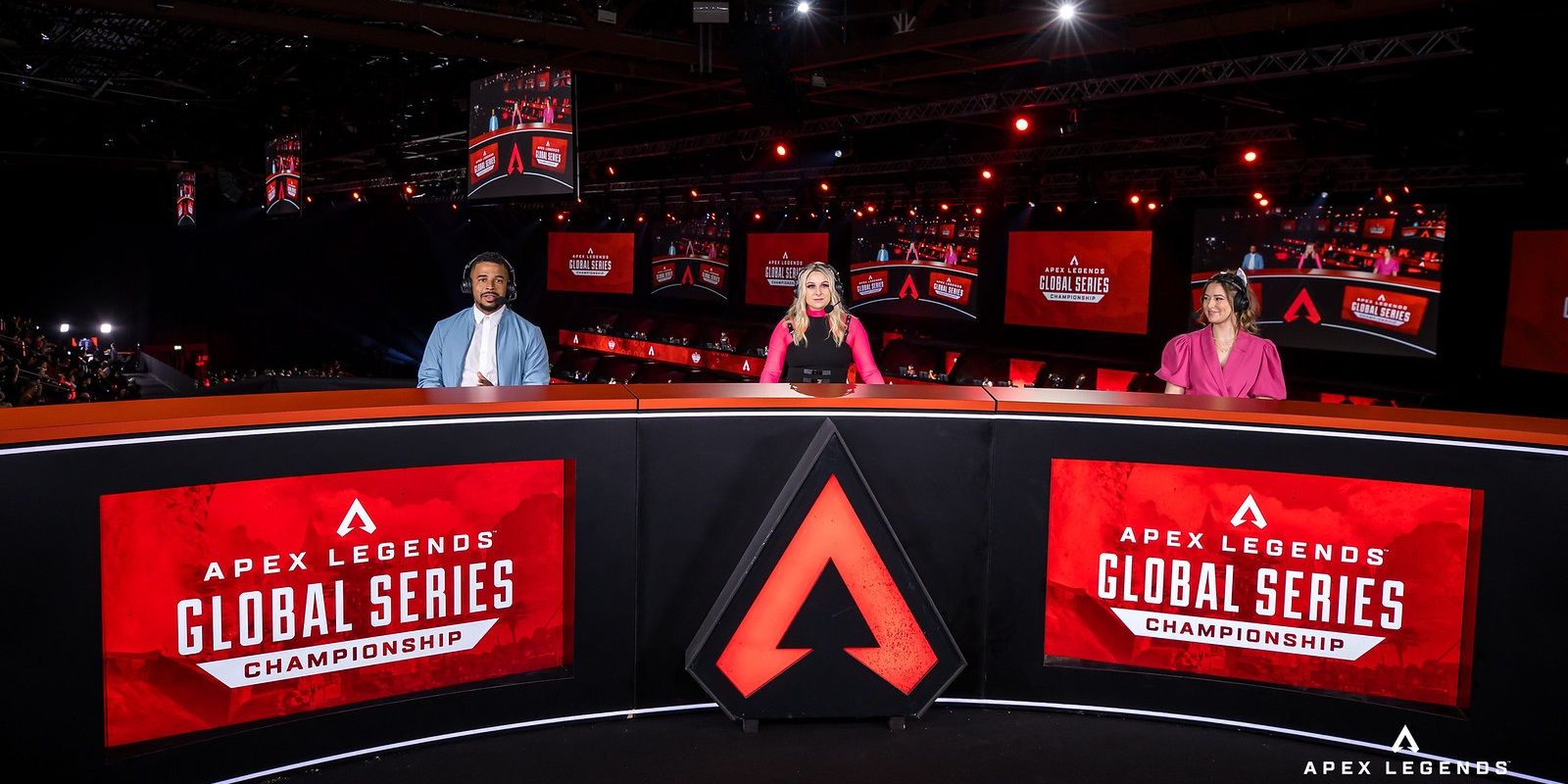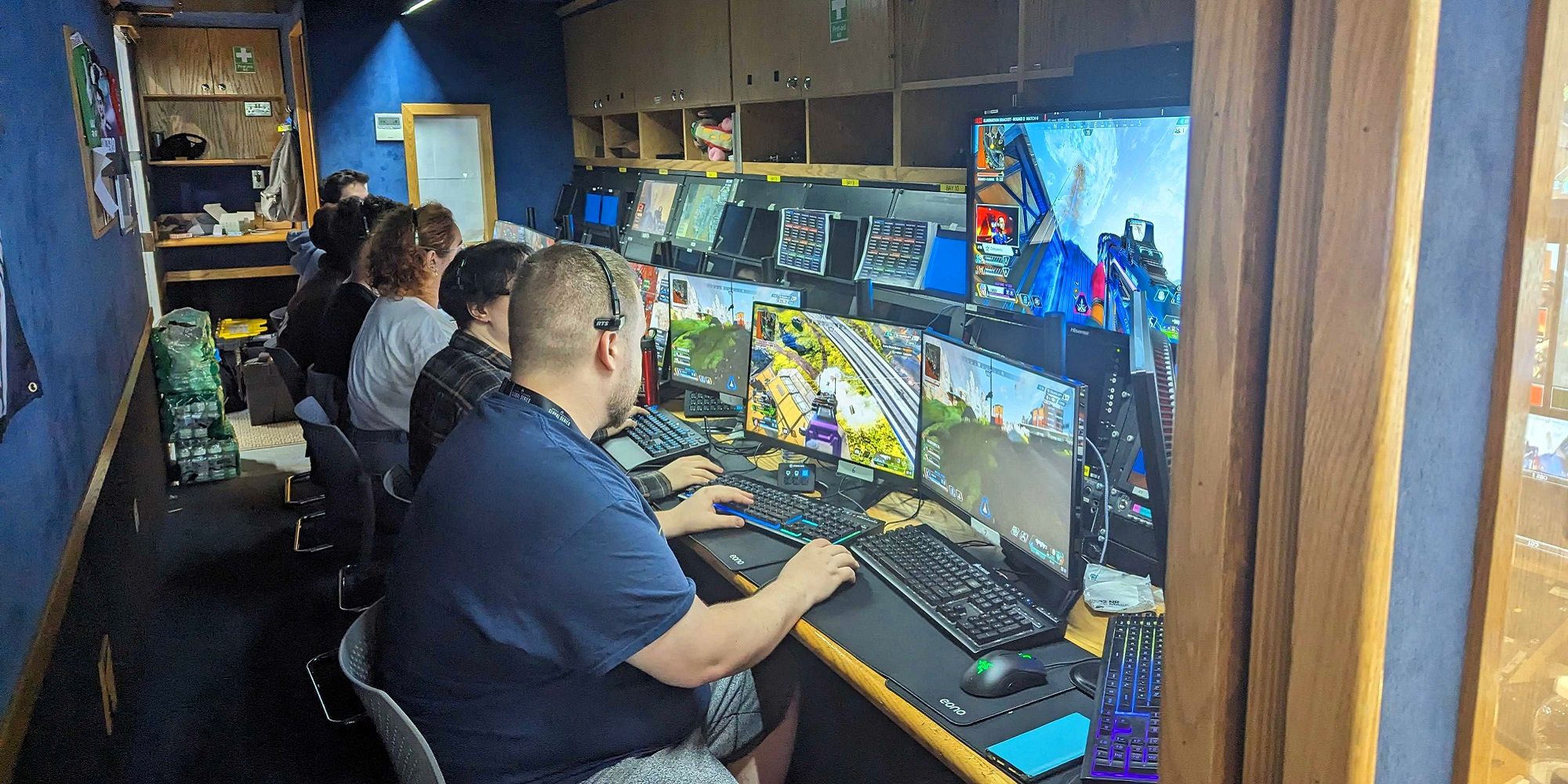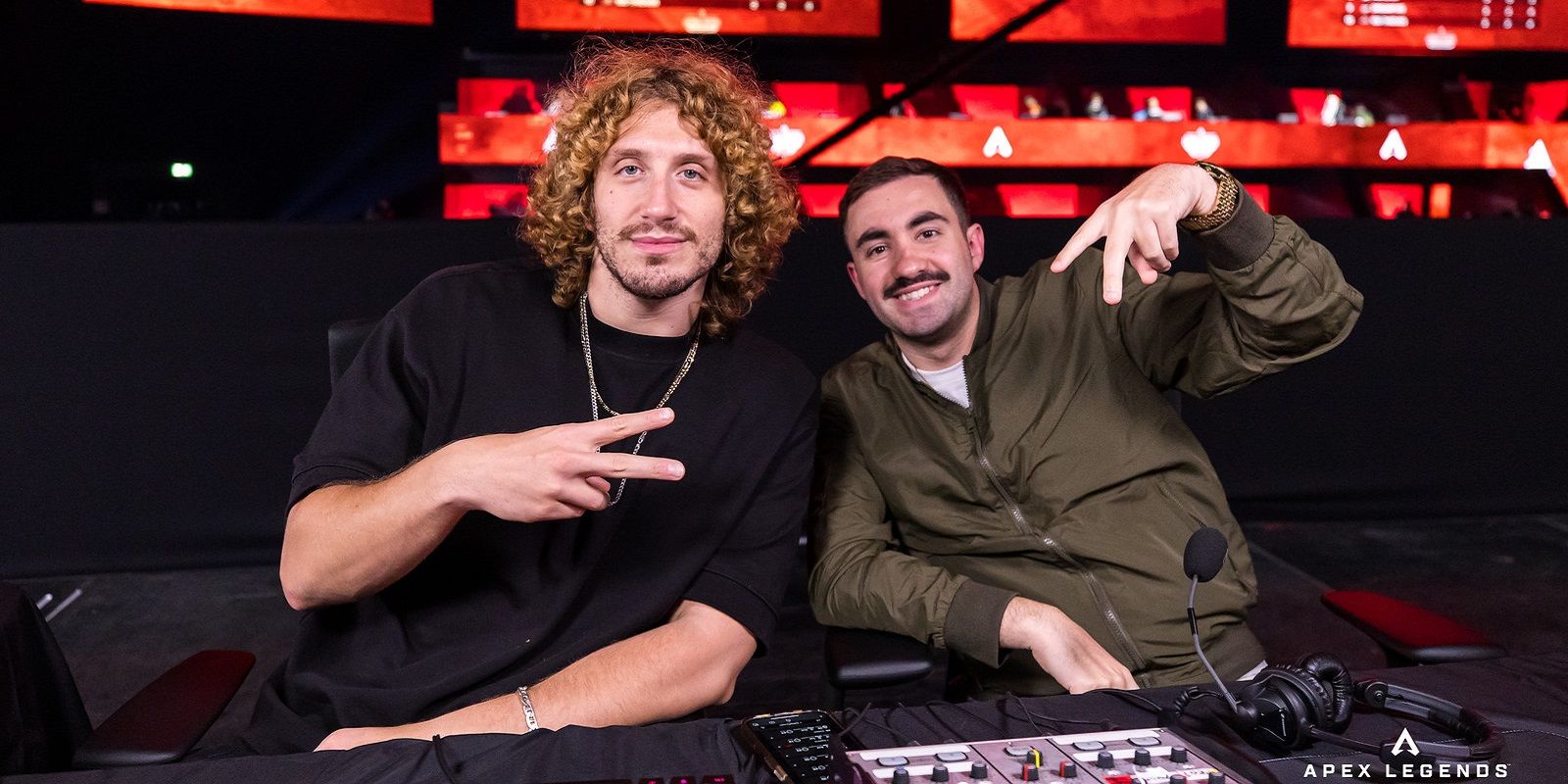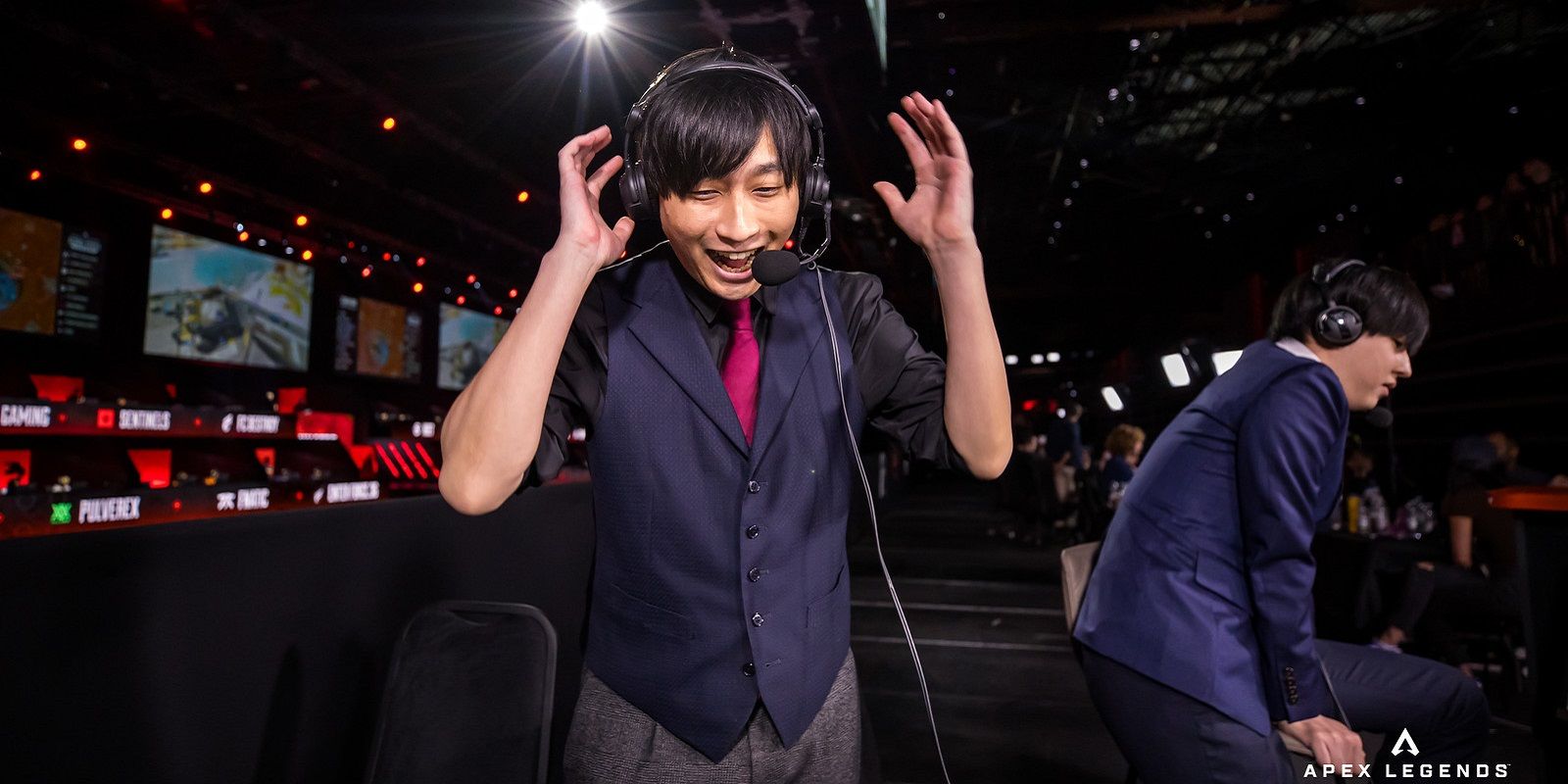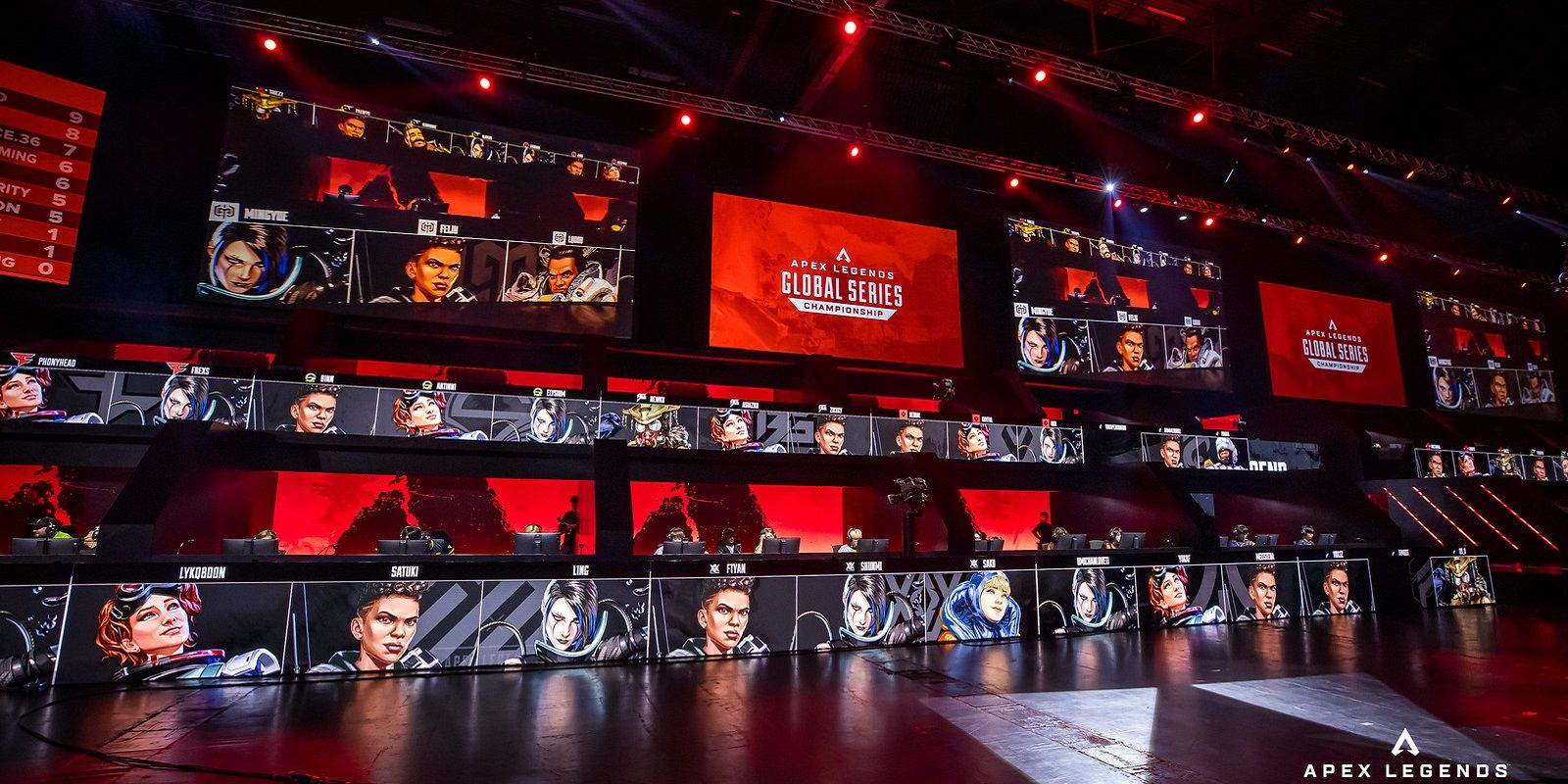I’m watching the ALGS Championship from a truck, but that might be underselling it. Sure, from the outside, it looks like the rear section of an articulated truck, emblazoned with the Apex Legends Global Series logo. Inside, it’s a NASA control centre. Two producers watch over 20 screens, cutting between the POVs at the perfect moment as directions and responses are shouted along the interior. Five observers sit a little further down, nestled among yet more monitors. It’s precise chaos, it’s clear communication, it’s how the ALGS gets made.
There has been a noticeable improvement to ALGS broadcasts at the Championship. Observing is a tough job, all about knowing where fights are going to break out and being there with a virtual camera ten seconds before you’re needed. In the past, viewers have missed key action as the broadcast has followed a bigger team just looting, but things have improved when it’s needed most.
Granted unprecedented access to the observer truck to see how the ALGS sausage is made, TheGamer saw in real-time just what goes into every broadcast and how well-oiled the observing team needs to be to make the perfect viewing experience.
“We realised during the Split 2 Playoffs that we needed to do something different,” admits Joe Lynch, the ALGS’ group director of content and programming. “So we built an all-star team.”
The team starts with the producer and game director, Jason ‘Alchemist’ Baker and Tim ‘roots’ Roots. Lynch allowed them to handcraft their own team of observers, telling them, “have your pick of the entire planet”. They came back to him with a wishlist, and every single observer said yes. It’s a global team, flown to Birmingham, UK to work together for the very first time. You wouldn’t know that this was the team’s first tournament working together, though.
We enter the truck near the start of a match, when things are pretty calm and it’s relatively simple to keep track of what’s going on. Relatively. Baker makes the big picture calls, picking out storylines, while roots has eyes on each of the eight observer POVs, directs people to different areas of the map or towards different teams in order to catch any potential action. Another director, Alex, also takes on some of the responsibilities. Everyone in the truck is aware of which teams rotate in which directions, and how that will play out in this particular lobby. Someone calls that NRG will probably head south from their current position, so an observer is sent that way just in case they run into anyone. Three teams occupy Harvester, well away from the zone pull, so a camera stays there in case of a halt in the temporary ceasefire.
Lynch tells me about directing a team like this, and how you can either go with top-down or bottom-up approaches. Does the director call for what shots they want, or do the observers tell the director what they have? To paraphrase Hannah Montana, live in the truck, it’s the best of both worlds.
“Battle royale is hard, man,” Lynch says. “If you have a director who's trying to do everything at once, they’re not always gonna get everything – it's hard! – but if you have a rockstar team who knows the game and knows how to tell a story, and a producer who’s guiding it and saying, ‘this is the story we want to tell here, the teams we want to watch’, now you have 12 sets of eyeballs instead of one. That's shown through really strongly this weekend.”
As the match heads towards the endgame, the truck heats up. Clear, concise communication is of the utmost importance as more and more fights break out. In this particular match halfway through Loser’s Bracket, Alliance looks set to win. An observer says as much to roots and he switches to IGL John ‘Hakis’ Håkansson’s perspective. However, one aggressive push from Enter Force 36 later, the game has changed. Alliance isn’t out just yet, but they’re on the ropes. “E36 should win now,” comes the call, correctly this time. Roots picks a top-down shot of the final 1v1 before switching to Pulverex’s perspective to quickly show their ammo and health situation before another switch to E36. It’s pinpoint, it’s perfect, and it’s over.
“It’s about the knowledge of the game,” explains Lynch. “It’s about the storytelling, it’s about the framing. When you look at the free cam, how free cam works, how you're framing that, what you're following around, when you take a free cam, when you don't and the philosophy around observing and how it works.”
He’s also keen to point out that every member of the new hotshot observing team loves Apex Legends, and that comes across in their clear communication. They know the rotations, the POIs, the fan favourites, the teams who will push and the teams that will sit back. I feel like I have a better understanding of the esport than the average fan and I was overwhelmed by the amount of information pouring through screens and headsets in the observing truck. There’s no way you could do this job without an intense appreciation of the game, and that passion now shows through in the final product.
"People want different things and they want to hear different styles" - Joe Lynch, ALGS group director of content and programming
At this point, I’m certain that roots has seven pairs of eyes balanced precariously in his skull to keep track of everything that’s going on. He’s got his all-star team, yes, but the split-second decisions of directing a battle royale match in real time is astonishing to see in person. Every switch of POV is punctuated with a panning shot to set the scene, if only for a split second. When three fights break out at once across the map, he does let out a curse (“It’s fucking chaos!”), but quickly decides who to follow. At one point the team gets a message from the casters to ask whether Rhys ‘Zer0’ Perry has been on Fuse the whole day. Roots relays the question to the team and someone pipes up “No, he’s just switched from Bang.” The note goes back to the casting team. Everything comes through here.
There’s more than one broadcast leaving the Resorts World Arena, however, and Lynch says his team’s homework prepared them well for the tournament. So far, there have been no fires to put out, and that’s allowed the broadcast team to tweak and tinker with the show. Official B-stream host Jack ‘NiceWigg’ Martin’s stream has been added to the ALGS’ impressive Multiview stream, as well as Japanese-language broadcaster ‘CyberZ’, both of whom cut their own shows using the footage that the ALGS team shoots.
“We make the show that is telling the story that we're telling, but we know that people want different things and they want to hear different styles, they want different forms,” Lynch says. “What Wigg does is very unique to him and he has his own personality and his own style.”
The ALGS is also supporting five non-English language co-streams live from the event, something which Lynch wants to continue to evolve going forwards to broadcast to as many people as possible.
“There's logistical reasons and all sorts of reasons as to why it gets complicated, but our goal would be [to broadcast in] every language on the planet,” he says. Additionally, the team is working on sharing Apex’s API with as many co-streamers as possible, both live in-person at the event, and watching along on Twitch. While there are more technicalities involved than you could possibly imagine, he tells me he wants to “create a system where all the individual streamers and the watch parties can use [the API] too, so they can use the graphics they want to and put up the information they want. That's really important to us and so we try to do as much as we can to help facilitate that.”
The success of the broadcast this week has also allowed the team to make changes on the fly. The period before a match when teams pick their Legends for the battle ahead is arguably the most boring part of an Apex match, but the broadcast team has added some flavour to proceedings by showing the Legends being selected in real-time on the banners in front of the players. It’s great for the audience in the arena, and looks impressive in panning shots on the broadcast too.
They have also worked to make pauses a little more exciting, or at least clearer, because while they’re vital to maintain competitive integrity, they’re not a good experience for the audience. At the start of the week, we were thrown back into the match with no warning, but Lynch’s team quickly worked up a solution and implemented an on-screen ten second countdown until play resumes to make it clearer for everyone involved. That has since taken on a life of its own, as fans in the arena have begun shouting the countdown, which staff couldn’t believe when they heard for the first time.
“That was 100 percent not planned,” Lynch laughs. “As soon as they did it, in the truck we all high five – it worked!”
They’re already looking ahead to next year, though. Observing is a different beast for online tournaments, as observer ping can be an issue with such a global team, so Lynch is trying to work out how to mitigate that. They’re working with AWS and other options to make it work, but it’s clear that Lynch wants to keep this observing team together for Year 4. Other than that, they’re having a “conversation” about Catalyst walls and how to effectively broadcast endgames among the visual clutter of her abilities. The only thing he can say for sure about next year is that they’re trying to make the broadcast “more dynamic” next time around. With the ever-expanding roster of globally popular co-streams and the all-star observing team levelling up the ALGS’ production, the future of watching Apex Legends esports looks bright.

